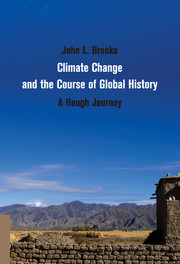Book contents
- Frontmatter
- Dedication
- Contents
- List of Figures and Tables
- Acknowledgments
- List of Abbreviations
- Introduction
- Part I Evolution and Earth Systems
- Part II Domestication, Agriculture, and the Rise of the State
- 3 Agricultural Revolutions
- 4 The Mid-Holocene, the Late Neolithic, and the Urban-State Revolution
- 5 Human Well-Being from the Paleolithic to the Rise of the State
- Part III Ancient and Medieval Agrarian Societies
- Part IV Into the Modern Condition
- Data Bibliography: Full Citations for Data Used in Figures and Tables
- Index
- References
3 - Agricultural Revolutions
Published online by Cambridge University Press: 05 August 2014
- Frontmatter
- Dedication
- Contents
- List of Figures and Tables
- Acknowledgments
- List of Abbreviations
- Introduction
- Part I Evolution and Earth Systems
- Part II Domestication, Agriculture, and the Rise of the State
- 3 Agricultural Revolutions
- 4 The Mid-Holocene, the Late Neolithic, and the Urban-State Revolution
- 5 Human Well-Being from the Paleolithic to the Rise of the State
- Part III Ancient and Medieval Agrarian Societies
- Part IV Into the Modern Condition
- Data Bibliography: Full Citations for Data Used in Figures and Tables
- Index
- References
Summary
The origins of agriculture lay in the sudden end of the Pleistocene, as the cold, dry glacial world, after some climate oscillations, gave way to the warm, wet Holocene that has sheltered humanity ever since. After spreading thinly across African and Eurasian grasslands during the last stages of the Pleistocene, humanity suddenly settled down in villages and began to produce – rather than simply to forage for – the sustenance of survival. This was what we have called since the days of the great archaeologist V. Gordon Childe the agricultural revolution or the Neolithic revolution. This was the much debated “moment” of domestication, as plants, animals, and people themselves were transformed by a synergy of human action and natural contingency to forge a radically new configuration of human behavior and natural ecology. The result would be an accelerating growth of human numbers, and the emergence of an entirely new set of tensions between humanity and nature.
We call this a “revolution” in the human circumstance, but such terms depend on your perspective. In geological and evolutionary time, the emergence of settled life and agricultural production was certainly a revolutionary transformation. If we imagine the 5 million years of human evolutionary time as a twenty-four-hour period, the entire 300,000 years of modern humanity comprises about an hour and a half, the 135,000 years since modern humans may have left Africa comprise about a half hour, and the 12,000 years since the end of the Pleistocene and its aftershocks comprise slightly more than four minutes. Against a similar twenty-four-hour clock of the geological time of evolving earth systems since 4.6 billion years ago, these epochs are even more minute: about six seconds since the emergence of modern humanity, one second since the first successful departure from Africa, and a few nanoseconds since the end of the ice ages.
- Type
- Chapter
- Information
- Climate Change and the Course of Global HistoryA Rough Journey, pp. 121 - 164Publisher: Cambridge University PressPrint publication year: 2014



